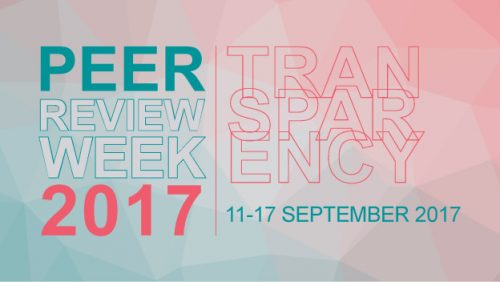
At the AMS Annual Meeting panel on Peer Review last January, journal editors Tony Broccoli, Carolyn Reynolds, Walt Robinson, and Jeff Rosenfeld spoke about how authors and reviewers together make good reviews happen:
Robinson: If you want good reviews, and by good I mean insightful and constructive and that are going to help you make your paper better, the way to do that is to write a really good paper. Make sure your ducks are in a row before you send it in. You should have read over that and edited it multiple times. I’m going to, at some point in my life, write a self-help book in which the single word title is, “Edit!” because it applies to many parts of life. Have your colleagues—not even the co-authors—look at it. Buy the person in the office next door a beer to look over the paper and get their comment. There may be problems with the science–and none of our science is ever perfect–but if it’s a really well constructed, well formulated, well written paper, that will elicit really good reviews.
The flip side of that is, if the paper is indecipherable, you’ll get a review back saying, “I’m trying to figure this out” with a lot of questions, and often it’s major revisions. (We don’t reject that many things out of the box.)
The problem is, the author goes back and finally makes the paper at a standard he or she should have sent in the first time. It goes back to the reviewer, and then the reviewer understands the paper and comes back and starts criticizing the science. Then the author gets angry…”You didn’t bring that up the first time!” Well, that’s because the reviewer couldn’t understand the science the first time. So, if you want good, constructive reviews, write good papers!
Reynolds: You want to make things as easy as possible for the reviewers. Make the English clear, make the figures clear. Allow them to focus on the really important aspects.
Broccoli: I would add, affirming what Walt said, that the best reviews constructively give the authors ideas for making their papers better. Some reviewers are comfortable taking the role as the gatekeeper and trying to say whether this is good enough to pass muster. But then maybe they aren’t as strong as need be at explaining what needs to be done to make the paper good enough. The best reviews are ones that apply high standards but also try to be constructive. They’re the reviewers I want to go back to.
Rosenfeld: I like Walt’s word, “Edit.” Thinking like an editor when you are a reviewer has a lot to do with empathy. In journals, generally, the group of authors is identical or nearly the same as the group of readers, so empathy is relatively easy. It’s less true in BAMS, but it still applies. You have to think like an editor would, “What is the author trying to do here? What is the author trying to say? Why are they not succeeding? What is it that they need to show me?” If you can put yourself in the shoes of the author—or in the case of BAMS, in the shoes of the reader—then you’re going to be able to write an effective review that we can use to initiate a constructive conversation with the author.
Broccoli: That reminds me: Occasionally we see a reviewer trying to coax the author into writing the paper the reviewer would have written, and that’s not the most effective form of review. It’s good to have diverse approaches to science. I would rather the reviewer try to make the author’s approach to the problem communicated better and more sound than trying to say, “This is the way you should have done it.”